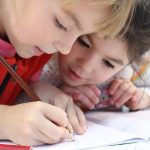The report covers inclusion and education – the theme of our 2020 GEM Report – in Central and Eastern Europe, the Caucasus, and Central Asia. Working from 30 new profiles of education systems from the region, the Report shows that, while access to education is high, the region has been trying to overcome a heavy legacy of segregated education, which is holding it back from achieving inclusion for all.
In the past 20 years, education levels in the region, already among the world’s highest, have increased further, seeing out-of-school rates fall by half. Adoption of the UN Convention on the Rights of Persons with Disabilities and the influence of international bodies, such as the Council of Europe and European Union, have led to important reforms. But the shift to inclusion is far from complete. Many countries in the region have yet to shed one of the most poignant legacies of the second half of the 20th century: segregated education, once wrongly regarded as an efficient solution.
COVID-19 has made the need for inclusive policies particularly urgent. Despite strong government education responses to COVID-19, many learners were left unassisted, as in all corners of the world. Access to online education was a challenge for the estimated 1 in 4 secondary school students in the region without a laptop and 1 in 10 without access to the internet.
Inter-ministerial collaboration is well embedded in the region but needs strengthening regarding data exchange as in Lithuania, whose education, health and social ministries agreed to jointly develop measures to help children identified with autism or other developmental disabilities. Management responsibilities for local authorities and schools support efficient resource use but require clear mandates and adequate resources.
To learn more about common issues of the region and how different countries use different strategies to overcome them please download the full report here.






